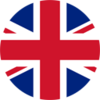Pangasius(Pangasianodon hypophthalmus) is a popular potential culture species in Asia, especially in tropical areas like Vietnam, Thailand, Cambodia, Myanmar, Indonesia, Malaysia, Bangladesh, India, and the Philippines. Pangasius has become the preferred aquaculture species due to its ease of production and tolerance of intensive culture conditions. Vietnam produces over 1 million metric tons (MT) of Pangasius annually and exports the product to over 120 countries. Therefore, to maintain and develop the huge amount of Pangasius production while have to face many difficulties like the seed quality is not guaranteed, the weather changes, the water source is not quality, the disease is becoming more and more complicated which are always be the big concern of farmers.
And that is also the aim of this article which gives you deep down information about the properly cultural process to increase the survival rate in Pangasius and raise the production and maximize the profit.
1.POND PREPARATION
This is the first important step that farmers will have to perform. The area of fish ponds depends on local conditions and farmers, but in a small area, environmental conditions are easy to change, especially as temperature, dissolved oxygen,.... detrimental to fish, but If the pond is too large, it will be difficult to manage and take care of. The Suitable for Pangasius pond with an area of 1,000 - 2,000 m2 with a depth of 1.5 - 2.0 m or 4000 – 8000 m2 and 3.5 – 5m in-depth for the large production.
The height of the pond should be designed to match the tides to reduce the cost of pumping and discharging water. If possible, there should be separate supply and discharge drains. There should be settling ponds, wastewater treatment ponds, dead fish burial pits.
Arrange the water supply and drainage system easily and the pond bottom must slope towards the drainage. Active and clean water source, far from sources of industrial, agricultural, and chemical wastewater.
2. POND IMPROVEMENT
- After harvesting the catfish, it is advisable to vacuum up organic humus, excess substances deposited at the bottom of the pond to limit pathogens accumulating at the bottom of the pond, affecting the next farming crop.
The main tasks of pond preparation are cleaning ponds and eliminating pests is given top priority.
a/ Pond cleaning
- The slugs dredge the pond bottom with about 10-15 cm of young mud left, repair the pond banks, fill the holes, etc.
- Replacing landslides, repairing drains, clearing weeds around the pond banks and using nets around the pond to avoid enemies. damage to ponds in the early stages of stocking fry.
- The slugs dredge the pond bottom with about 10-15 cm of young mud left, repair the pond banks, fill the holes, etc.
- Dry the pond bottom for 1-3 days to treat the pathogen
b/ Killing impurities: Using the derris powder with a dose of 4-5kg/1000m3 of water. After using 2-3 hours, trash fish dies, take out the carcass.
c/ Water Treatment of ponds:
- Take water into the pond at the highest tide, get water through the filter net to prevent trash and bad fish from entering the pond.
- After taking water into the pond for 2 days, mix Vimekon in water and throw it into the pond to disinfect the water source, the dose is 1kg/1,500-1,700m3 of water.
d/ Choosing fingerling
When rearing pangasius fry for artificial reproduction, it is advisable to choose to buy fish from production farms with the registered quality announcement, to improve the efficiency of the rearing process.
-The best time to release fry into the nursery pond is early morning and lately afternoon when the weather is cool.
-To raise a high survival rate, fish samples should be 1.7cm, about 40-50 fish/kg,
-The appropriate stocking density to disease management easily is 500 fish/m2 of water surface area.
-The water level of the nursery pond on the first day is 1.0 - 1.2 m, then add water to the pond so that on the 15th day, the pond water level reaches 1.5 - 1.7 m.
-Selection of fingerlings must meet the following criteria:
+ Fish of uniform size, swimming actively and strongly
+ The fish is healthy, well-proportioned, not scratched, deformed, deformed, and the arcs and rays are not torn.
+ Bright colors: black-green back, silver-white belly, stripes along the body must be clear.
+ Before catching fish: Do not starve the fish for too long, the fish is sick, the fins and periods that stretch out when pulling the net are easily lost due to crashing, transporting the fish will be lost, so stop feeding before 1- 2 days is best.
+ 1 day before catching fish should be treated: Fresh-Water 1kg/2,500 m3 of water or Kill-Algae 1l/1,000m3 of water.
Note: it is recommended to go to the rearing pond to check 1-2 days before catching in the early morning around 6-6:30, to promptly detect diseased fish, if any, stop catching to avoid loss during transportation, and return to the pond. feed.
d/ Transport and stock of fingerlings
- Should choose fish ponds near the canal, large rivers can be chiseled, ridges move close, easy to manipulate.
- Transport the fingerlings when it is cool, preferably in the early morning or evening.
- When transporting fingerlings, use Vime-Yucca 1l/80-100m3 of water, mixed with clean water and sprinkled on cloudy boats.
- If the fish has a large size of 10-15 fish/kg, it is appropriate to transport less than about 3-4 tons.
- During the transfer process, it is recommended to change the water, treat Vime-Yucca 1l/80-100m3 of water to make the fish healthier and less prone to lose.
e/ Density: Stocking density is from 20 to 30 fish/m2, but in actual production conditions farmers can still stock with a high density of 50-60 fish/m2.
3. CARE AND MANAGEMENT
a/ Feeding:
Currently, pangasius farming uses completely commercial feed. Normally, the feed for catfish has a reduced protein content of 33-22% during the 6 months of the culture cycle.
The amount of food provided daily depends on the level of fish-eating, in the first 2 months of the culture cycle required 5 - 7% of the fish weight/day, and the following months of the culture cycle ranges from 3 - 5% of the weight and fish weigh 700g or more, feed 1-2% of fish weight/day.
Regularly supplement vitamins, minerals, premixes, enzymes to enhance resistance and support digestion for fish such as: Prozyme for fish, Glusome 115, Vemevit No 9,100,…
- Avoid to excess food wastes and pollutes water sources.
b/ Water quality management
Water quality parameters that must be checked include temperature, dissolved oxygen, pH, nitrate levels, salinity, alkalinity, hardness and ammonia. Other factors that can significantly affect water quality include light and suspended solids (sand, mud or coral). In the condition of nursery ponds for fish to grow and develop well, it is advisable to periodically check the environmental factors of the nursery pond and ensure that some of the following criteria are met:
- pH: 7 - 8.5
- Transparency: 30-40 cm
- NH3 < 1 mg/l
- Oxygen >= 3 mg/liter
Observe the watercolor of the pond should always be banana green, which is the best. Therefore, it is necessary to periodically use probiotics as Vime- Bitech in combination with new water changes to keep the environment clean and stable during the rearing process, to prevent fish from being infected.
4. HEALTH MANAGEMENT
When there is a phenomenon of fish floating with a different head than normal, quickly determine the cause and take action. If it is determined that the fish get the disease, it is necessary to find the right cause to have the right treatment.
To prevent fish diseases and disinfect pond water, use powdered lime to mix water and sprinkle it all over the pond with a dosage of 2-3 kg/100m3 of pond water. You can use microbial products or formol to treat and disinfect pond water.
When feeding, it is necessary to apply the 4-quantitative method of "quantity, quality, location, time" to limit leftovers from polluting the water environment.
-To increase efficiency in the farming process, periodically every 25 - 30 days, remove internal parasites for fish, help fish grow quickly, prevent yellow meat, limit pathogens for fish.
- Fish <50g should be mixed to feed Vime-Clean 1kg/15-20 tons of fish, continuously for 2 days in the morning..
- Large fish 100g on mixing feed Vimax 1l/40 tons of fish, continuously for 2 days in the morning.
- Fish over 500g should be mixed to feed Vime-Clean 1kg/15-20 tons of fish, continuously for 2 days in the morning.
REFERENCES
https://www.aquaculturealliance.org/advocate/pangasius-culture-in-western-hemisphere/


